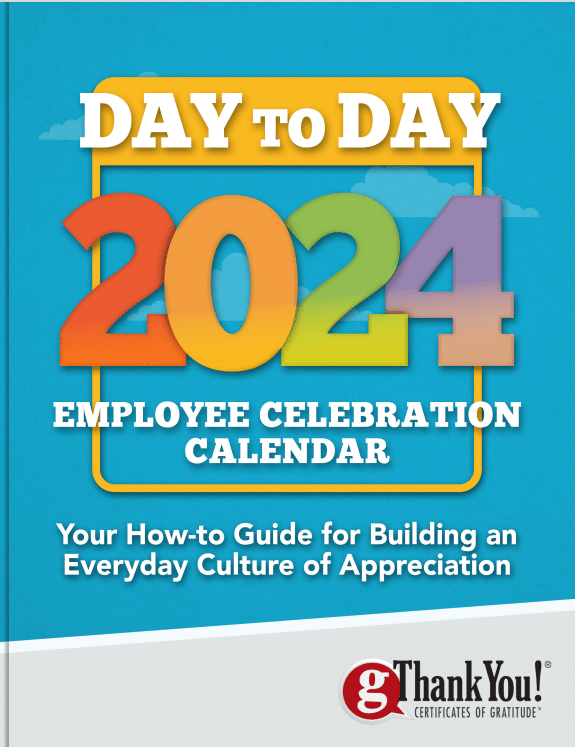Two of our favorite events are coming up and we want to help you celebrate: Employee Appreciation Day and Pi Day! You still have time to rev up the fun engine and plan ahead for these excellent opportunities to recognize employees.
EMPLOYEE APPRECIATION DAY (MARCH 1)
Let the tone of appreciation ring loud and clear! Celebrate with a team activity and message of gratitude or use the occasion to kick off a new appreciation program.
Some activities can include:
- Tell your team about Action for Happiness’ “10 Days of Happiness,” a free, research-backed coaching program that “guides you through daily actions for happier living.”
- Facilitate an (optional) book club or group that gives employees 30 minutes a week to connect and talk about something that has nothing to do with work. The relationships they build will be a net plus for your company.
- Give your team gratitude journals. When you give out the journals, share research on their benefits and talk about your own experience. That’s more likely to inspire workers to try it themselves.
- Have a yoga instructor come in a few times a week to do short classes for employees who could use a break that’s both relaxing and revivifying.
PI DAY (MARCH 14)
When it comes to gratitude, we can keep it going forever! Serve up some delicious pie to celebrate the mysterious mathematical constant known as pi, or 3.14159….
Some activities can include:
- Host a breakfast with pie and coffee! Invite everyone to come indulge in a slice of pie and fresh coffee, allowing team members to mingle and chat.
- Ask for pie recipes ahead of time and distribute a digital or printed pie cookbook including employee names, photos and notes.
- Hand out pie gift certificates to all employees as a fun thank you to go pick up a pie to enjoy at home! We offer same day shipping for orders received by 3PM (CT), Mon-Fri. Our pie gift certificates are good for any brand of pie, cake, cheesecake or similar items — fresh from the bakery section or frozen. Redeem at virtually any U.S. grocery store chain. Your organization’s name will be printed on the gift certificates for free and Gratitude Cards with your custom message and logo (if desired) are FREE.
Ideas and Resources
2024 Day-to-Day Employee Appreciation Calendar
Inside this one-of-a-kind resource you’ll find the inspiration, creative ideas and current examples to help you keep employees feeling valued and important to the success of your organization in the year ahead. Why wait? Download Your Free eBook Now!
BIG List of Employee Appreciation Gift Ideas
This hefty gratitude resource offers ways to support and recognize the people who make your business work. It’s simple to download, share, print and use when you are planning ahead or need quick ideas.
The BIG List of Employee Appreciation Gift Ideas is broken down into helpful categories so it’s easy to find just the right gift or concept for whatever your objective or occasion may be:
- Support new ways of working
- Encourage employee wellbeing
- Reinforce teamwork and organizational values
- Celebrate holidays with flare
- Acknowledge milestone moments in work and life
- Recognize people anytime with simple gestures
We guarantee you can find something for everyone, regardless of their position and your budget. From free to extravagant, recipients will be wowed by your sincere acts of gratitude. Read to learn more here!
Learn More About gThankYou Certificates of Gratitude
- Check out our Home Page
- See all our Gift Certificate Choices
- Watch our ‘About Us’ Video
- See what customers say in our Case Studies
- Look at our FAQ
- See our FREE customizable Gratitude cards
- Reach us at 888-484-1658 or via info@gthankyou.com
Pie Photo by Brooke Lark on Unsplash











